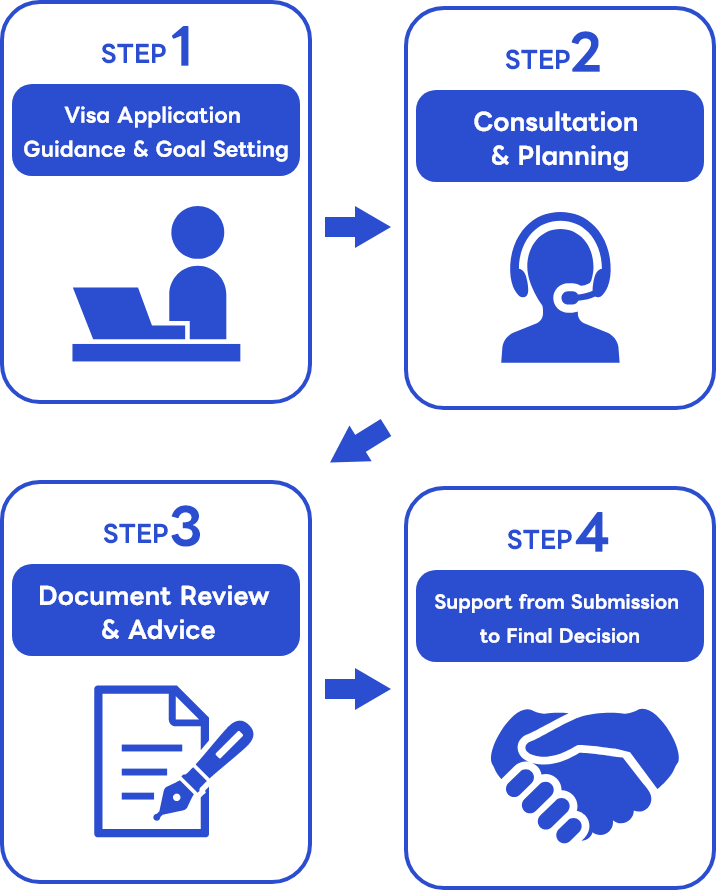Last Updated:June 27, 2025
What is the Family Class (Spouse/Common-Law Partner)?
This category is designed for Canadian citizens and permanent residents who wish to live with their spouse, common-law partner, or dependent children (biological or adopted) in Canada. The sponsor, whether a Canadian citizen or permanent resident, is required to support the applicant by meeting their basic needs and ensuring they do not rely on social assistance for a specified period. While waiting for the application to be processed, the applicant may apply for and obtain a work permit to support themselves in the meantime.
The eligibility criteria for the Family Class (Spouse/Common-Law Partner)
- Spouse who is married to a Canadian citizen or permanent resident.
- Common-law partner who has lived together with a Canadian citizen or permanent resident for at least 12 consecutive months and has a relationship similar to that of a married couple.
- Dependent child who is a minor biological or adopted child of a Canadian citizen, permanent resident, or the applicant.
- The sponsor must be a Canadian citizen or permanent resident who is 18 years or older and must have the ability to meet the basic needs of the applicant.
How to successfully navigate the permanent residence application through the Family Class
Preparing documents to prove relationship with the sponsor
Documents proving a genuine marriage or common-law relationship with the sponsor are required. For common-law partnerships, it is especially important to demonstrate that you have been living together in a marriage-like relationship for at least one year.
The principal applicant is not the sponsor but the foreign national
The principal applicant is the foreign national, not the sponsor. The applicant needs to be aware that you are an applicant for permanent residence yourself and proceed with your preparations without relying entirely on your Canadian partner.
Assessment in the Family Class
The primary focus of the assessment is whether the relationship between the sponsor and the applicant is genuine or not. The sponsor’s ability to provide for the applicant’s basic needs is also assessed.
Application process for the Family Class (Spouse/Common-Law Partner)
01Applying for permanent residence to Immigration, Refugees and Citizenship Canada (IRCC)
Create an online application portal account for permanent residence, upload all of the necessary documents and submit them to IRCC.
02Receiving an Acknowledgement of Receipt (AOR) from IRCC
An Acknowledgement of Receipt letter, containing a file number, will be sent via email by IRCC, and the sponsor’s review will begin. Afterward, the review progress can be monitored using the tracking service, “Your Application Status Tracker”. Applicants will also be able to apply for an open work permit during the review period.
03Sponsor review approval
IRCC will send an email notification once the sponsor is approved. The applicant’s review will continue thereafter.
04Biometrics (Fingerprint Authentication)
A request letter for biometrics will be sent from IRCC. If you are in Canada, biometrics will be taken at Service Canada, and if you are outside Canada, at the Visa Application Centre.
05Undergoing an Immigration Medical Exam
You will receive a request letter for an Immigration Medical Exam from IRCC. You must complete the examination with a Panel Physician approved by IRCC.
06Completion of the review by IRCC (Inside/Outside Canada)
Applicants in Canada will receive a PR confirmation email from IRCC and will be required to upload the necessary information and photos for the PR card online. Applicants outside Canada will need to send documents to the designated visa office (for Japanese nationals, this is Manila, Philippines) via the Visa Application Centre. The paper Confirmation of Permanent Residence (CoPR) will then be mailed to them.
07Receipt of CoPR (Confirmation of Permanent Residence)
You will receive the CoPR (Confirmation of Permanent Residence). Applicants in Canada can download it online, while those outside Canada will receive it via the Visa Application Centre.
08Landing
Applicants outside Canada will enter Canada with the CoPR. Those within Canada can complete the landing process online.
09Receiving the PR card
A few months after landing, the PR card will be mailed to the designated address in Canada.
Processes (03), (04), and (05) can occur in any order. In some cases, (04) may take place before (02).
Related Columns

Date Posted:October 28, 2025
AI Answers About Canadian Immigration Are Not Always Correct | CIC News Reveals How Much AI Gets Wrong

Date Posted:October 27, 2025
What to Keep in Mind When Accepting a Job Offer for Employer-Driven Permanent Residency Programs

Date Posted:October 22, 2025
Refugee Applications with Visa JP Canada – Handled by a Consultant with a IRB License
Related News
Looking to obtain permanent residence or a visa?
Consult with us now!

Applying for permanent residence or a visa to Canada on your own can be overwhelming due to the large number of required documents, and you may feel uncertain about whether everything is correct. However, if you're serious about immigrating to Canada, we strongly recommend seeking the support of an immigration consultant. There are many pathways to obtaining permanent residence, depending on factors such as your age, occupation, and family status. With the help of an expert, you can ensure that you plan the right approach tailored to your specific situation.
A professional immigration consultant will help solve your concerns
Get a free Counseling now
From immigration planning to application submission,
everything is completed with Visa JP Canada


Consulting with an immigration consultant makes the process clearer and much smoother. You’ll feel more confident with document submissions and procedures, significantly reducing the risk of mistakes. Take the first step toward your Canadian dream with the guidance of an expert.



